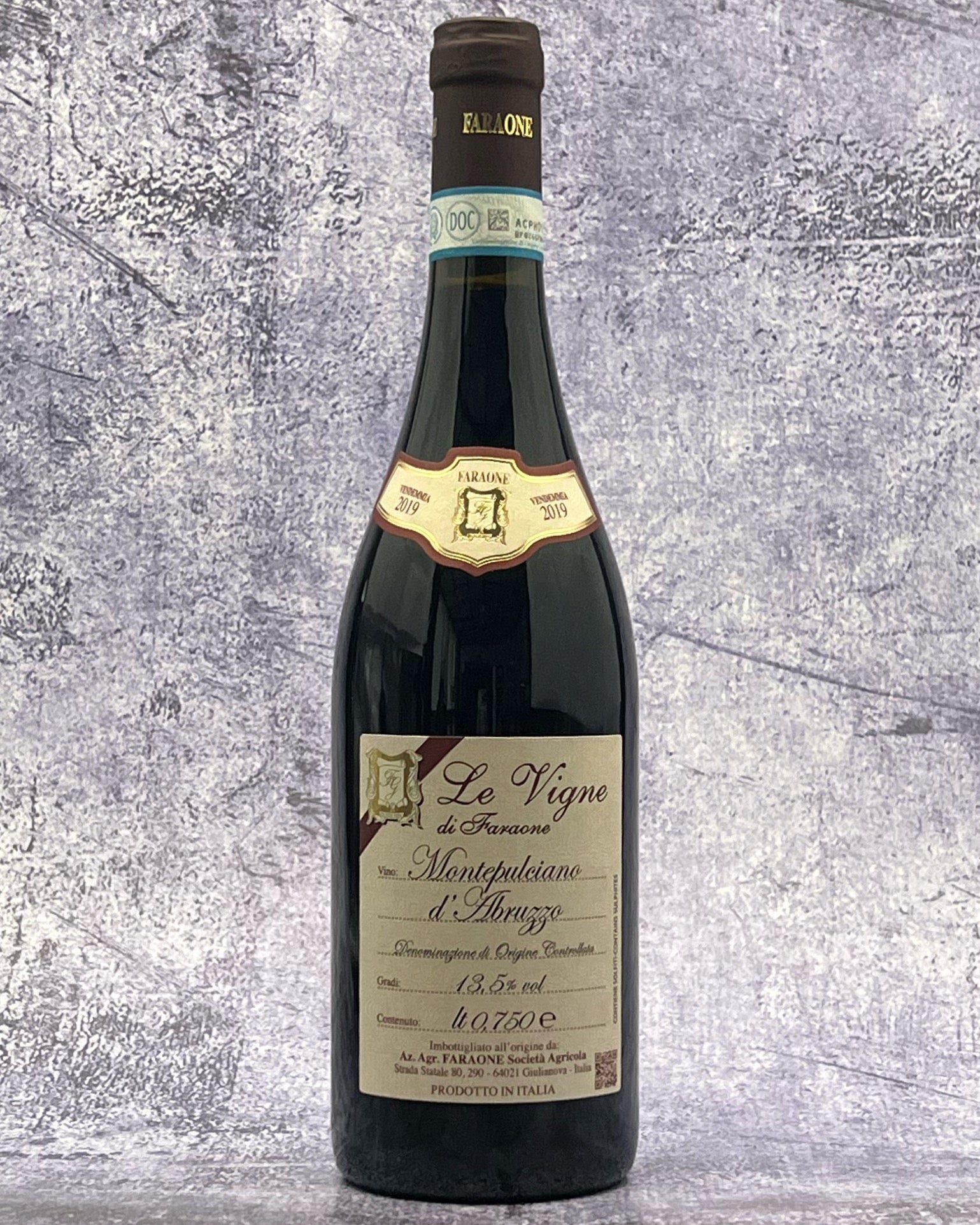Description
From: Abruzzo, Italy
Varietal: Montepulciano
Taste: Well-balanced wine, a deep garnet almost purple in the glass, with heady aromas of blackberry and black cherry. Dark forest fruits with notes of tobacco, clove, and licorice follow on the palate, while silky-smooth tannins and a refreshing acidity ensure a long, pleasing finish. This gorgeously rich and grippy Montepulciano d’Abruzzo is fantastic now but will be even better in a year or two. We recommend decanting this for 30 minutes or “letting it breathe” in your glass as you watch it unfold throughout the evening.
Pairing: Its high acidity and ripe tannins make it an excellent companion to hearty and savory foods, cutting through the richness of fatty meats and complementing the flavors with its own earthy and herbal tones. Ideal pairings include robust meat dishes like beef brisket, hamburgers, beef bolognese, tomato-based pasta dishes, and high-protein pizzas. The wine's characteristics also make it a fantastic choice for barbecue enthusiasts, enhancing the taste of smoked or grilled meats seasoned with herbs such as sage, basil, rosemary, or thyme.
In addition to meat dishes, Montepulciano d'Abruzzo pairs well with rich, roasted vegetables like baked potatoes, mushrooms, beetroot, and tomatoes, offering a comforting option for colder-weather dining. For cheese, aged cheddar, asiago, or authentic parmigiano reggiano will complement the wine's profile.
For those who enjoy Asian cuisine, Montepulciano d'Abruzzo can also be a delightful match for dishes seasoned with garlic, sesame, ginger, or soy sauce, including Korean barbecue and Peking duck, thanks to its ability to complement savory flavors.
However, it's best to avoid pairing Montepulciano d'Abruzzo with light and simple dishes such as salads and raw fish, as well as spicy foods, which can overwhelm the wine's flavors or accentuate its bitterness and alcoholic taste.
Eggplant Parmesan Pasta
By Kay Chun
About. In the Teramo province of the Abruzzo region, Italy, Le Vigne di Faraone is part of the offerings from Azienda Agricola Faraone, a winery with a history dating back to the 1930s. This winery is known for cultivating local grapes, including Montepulciano, Sangiovese, Passerina, and, more recently, Pecorino.
Abruzzo is located in central Italy, stretching from the heart of the Apennines to the Adriatic Sea. This geography provides a variety of landscapes, from mountainous and hilly areas to flat coastal regions. The climate in Abruzzo varies due to this geography. The coastal areas enjoy a Mediterranean climate with hot summers and mild winters, beneficial for specific grape varieties that thrive in warm conditions. In contrast, the interior regions, especially those at higher elevations in the Apennines, experience a more continental climate, with cooler temperatures ideal for grapes requiring slower ripening periods. This variation in climate within a relatively small region allows for producing a wide range of wine styles.
Abruzzo's terroir is characterized by its diverse soil types, from calcareous clay in mountainous areas to sandy soils along the coast. This diversity contributes to the distinct flavors and characteristics of Abruzzo wines. The region's most famous grape variety, Montepulciano, benefits significantly from the terroir, producing rich and robust red wines. The Trebbiano d'Abruzzo grape variety also thrives here, producing crisp, aromatic white wines.
The combination of sunny days, adequate rainfall, and a varying climate due to the region's topography and proximity to the sea creates an ideal environment for viticulture. The varying altitudes and exposures also play a significant role in the region's viticulture, allowing winemakers to produce wines with various flavors and styles.
Montepulciano d'Abruzzo and Montepulciano are terms that can be confusing due to their similar names, but they refer to two different things related to Italian wine.
Montepulciano d'Abruzzo is a type of wine made from the Montepulciano grape variety in the Abruzzo region of Italy. It is a Denominazione di Origine Controllata e Garantita (DOCG) and Denominazione di Origine Controllata (DOC) wine, which indicates its quality and the strict regulations governing its production. Montepulciano d'Abruzzo is known for its robust, full-bodied character, with flavors of red fruits, spices, and sometimes earthy notes. It is one of Italy's most famous and appreciated red wines, celebrated for its versatility, affordability, and aging potential.
Conversely, Montepulciano is primarily known as a historic town in Tuscany, not related to the Montepulciano grape used in Montepulciano d'Abruzzo wines. However, confusion often arises because Montepulciano (the town) is famous for its own wine, Vino Nobile di Montepulciano. This wine is made from the Sangiovese grape, locally known as Prugnolo Gentile, and not from the Montepulciano grape. Vino Nobile di Montepulciano is another highly regarded Italian wine known for its elegance, complexity, and ability to age gracefully.
Since 1970, Faraone has been bottling its own wines, including Montepulciano d'Abruzzo, Trebbiano d'Abruzzo, and Cerasuolo d'Abruzzo, all of which are DOC or DOCG Colline Teramane labels. The winery also produces wines under the Faraone IGT label from the local terroir.
Over the years, Azienda Agricola Faraone has expanded its product range beyond wines to include olive oil and is planning to introduce marmalades. The winery is committed to sustainability and preserving the rich winemaking tradition of the Abruzzo region. Their offerings, particularly the Le Vigne di Faraone line, showcase the quality and tradition of their production, including a Montepulciano d'Abruzzo that reflects the rich agricultural heritage of the area

